Cherry barb - Puntius titteya
Scientific name: Puntius titteya
Common name: Cherry barb
Family: Cyprinidae
Usual size in fish tanks: 4 - 5 cm (1.57 - 1.97 inch)
014
Recommended pH range: 6 - 7.5
Recommended water hardness: 4 - 18°N (71.43 - 321.43ppm)
0°C 32°F30°C 86°F
Recommended temperature range: 23 - 27 °C (73.4 - 80.6°F)
The way how these fish reproduce: Spawning
Where the species comes from: Sri Lanka
Temperament to its own species: peaceful
Temperament toward other fish species: peaceful
Usual place in the tank: Middle levels
Origin
The Cherry Barb (Puntius titteya) is native to the slow-moving streams and rivers of Sri Lanka. These waters are often shaded by dense vegetation, resulting in soft, slightly acidic to neutral water. In the wild, they prefer habitats with a sandy substrate, leaf litter, and an abundance of aquatic plants, providing both cover and breeding sites.
Short Description
The Cherry Barb is a peaceful and hardy fish, popular among both beginners and experienced aquarists. With its vibrant red coloration, especially in males, it adds a lively splash of color to any community tank. These fish typically grow to 4-5 cm (1.57-1.97 inches) in captivity, making them well-suited for smaller to medium-sized aquariums. They are best kept in schools of at least six individuals, which helps bring out their natural behaviors and reduces stress.
General Care
Cherry Barbs are relatively easy to care for, but they thrive best in a well-planted aquarium that mimics their natural habitat. A tank size of at least 40 liters (10 gallons) is recommended for a small school, though larger tanks will allow for a more diverse community. The tank should be equipped with plants like Anubias, Java Fern, or Amazon Swords to provide cover and breeding sites. Cherry Barbs prefer subdued lighting, so floating plants can also help diffuse light and make them feel more secure.
Maintain water conditions with a temperature range of 23-27°C (73.4-80.6°F) and a pH level between 6 and 7.5. The water hardness should be between 4-18°N (71.43-321.43 ppm). Good water quality is essential, so use a reliable filtration system and perform regular water changes of 20-30% weekly to keep ammonia, nitrite, and nitrate levels in check.
Compatible Tankmates
Cherry Barbs are peaceful and sociable, making them excellent additions to community tanks. They get along well with other small, non-aggressive species such as Harlequin Rasboras, Neon Tetras, Corydoras Catfish, and Zebra Danios. Avoid housing them with large or overly aggressive fish, as this can stress them and cause them to hide. Keeping them in groups of six or more helps to reduce stress and encourages their natural schooling behavior.
Feeding
Cherry Barbs are omnivores and accept a wide variety of foods. They will readily consume live, frozen, and freeze-dried foods such as brine shrimp, daphnia, bloodworms, and mosquito larvae. In addition to protein-rich foods, they should also be provided with vegetable-based options like spirulina flakes, blanched spinach, or high-quality flakes and granules formulated for tropical fish. A varied diet helps maintain their vibrant coloration and overall health. Feed them small portions twice a day to prevent overfeeding and maintain water quality.
Sexing
Sexing Cherry Barbs is relatively easy. Males display a vibrant red coloration, especially during the breeding season, while females are rounder with a more subdued, brownish-red color. The male's intense red hues make them more visually striking in a well-maintained aquarium.
Breeding
Cherry Barbs are egg-layers and relatively easy to breed in a well-planted tank. To encourage breeding, provide a tank with dense vegetation, such as Java Moss or Hornwort, where the fish can deposit their eggs. The water temperature should be slightly increased to around 27°C (80.6°F) to stimulate spawning. Males will display their brightest red colors to attract females.
During spawning, the female will scatter eggs among the plants, which will hatch in about two days. It's essential to provide hiding places for the fry, as Cherry Barbs may eat their own eggs and fry. The fry should be fed with newly hatched brine shrimp or liquid fry food until they are large enough to consume crushed flakes or micro-pellets.
Lifespan
Cherry Barbs have a lifespan of up to 5 years in captivity when provided with proper care, including stable water conditions, a varied diet, and a stress-free environment.
Conclusion
Cherry Barbs are an attractive and peaceful addition to community aquariums. With their vibrant colors, active schooling behavior, and easy care requirements, they make an excellent choice for both beginners and experienced aquarists. By providing a well-planted environment, compatible tankmates, and a balanced diet, you can ensure your Cherry Barbs thrive and display their best colors.
Pictures credit
Thanks to halkor who has allowed us to use the pictures. One picture was bought. Also thanks to Jonathon Whipple.












 Bala
Bala  Spotted
Spotted  Golden
Golden  Tinfoil
Tinfoil  Congo
Congo  Blue-barred
Blue-barred  African
African  Butterfly
Butterfly  Olivegreen
Olivegreen  Morse
Morse  Jerdon’s
Jerdon’s  Mosquito
Mosquito  Dwarf
Dwarf 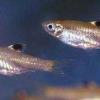 Eyespot
Eyespot  Goldfish
Goldfish  Penguin
Penguin  Siamese
Siamese  Koi
Koi  Pearl
Pearl  Glowlight
Glowlight  Crossbanded
Crossbanded 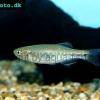 Yoma
Yoma  Orange
Orange 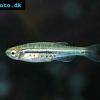 Dwarf
Dwarf  Zebra
Zebra  Rose
Rose  Red
Red  Arulius
Arulius  Tambraparni
Tambraparni  Fiveband
Fiveband  Bengal
Bengal 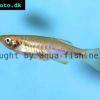 Tiger
Tiger  Malabar
Malabar  Queen
Queen  Hora
Hora  False
False  Redtail
Redtail  Rainbow
Rainbow  Flying
Flying  Garra
Garra  Black
Black 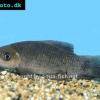 Purple
Purple  Burmese
Burmese  Dwarf
Dwarf  Isok
Isok  Rosy
Rosy 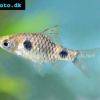 Two
Two 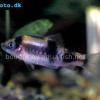 Melon
Melon 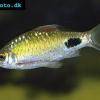 Black-spot
Black-spot  Golden
Golden  T-Barb
T-Barb  Ruby
Ruby  Checkered
Checkered  Rhomb
Rhomb  Gold
Gold  Tiger
Tiger  Brittan’s
Brittan’s 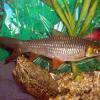 Greater
Greater  Long-band
Long-band  Twospot
Twospot  Reticulate
Reticulate  Cherry
Cherry  Denison
Denison  White
White  Lambchop
Lambchop  Harlequin
Harlequin